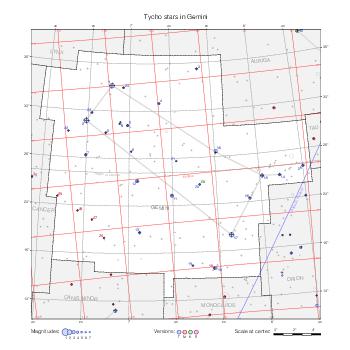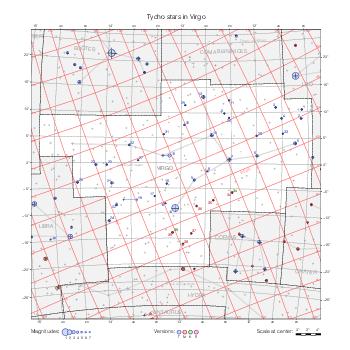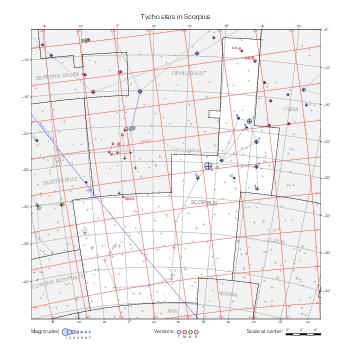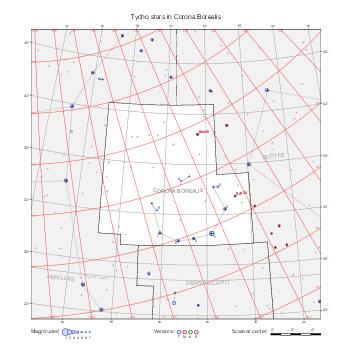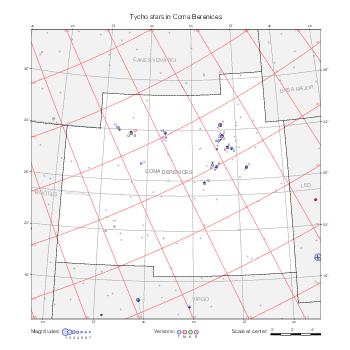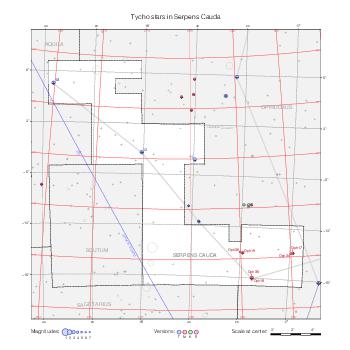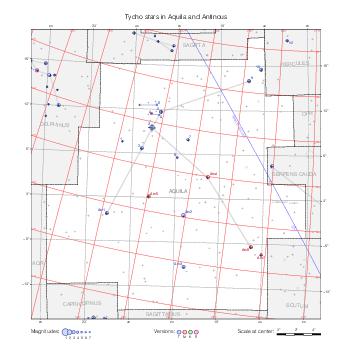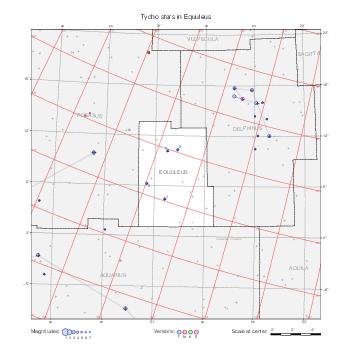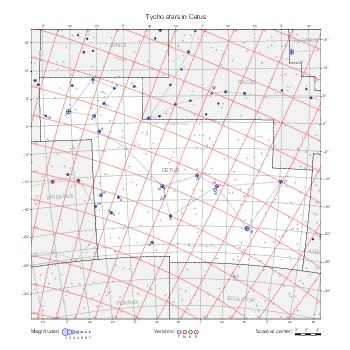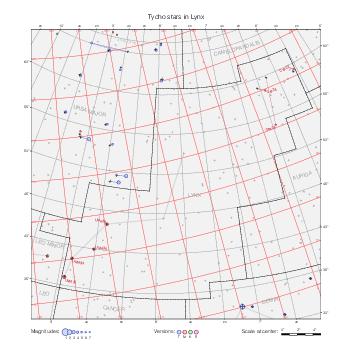Description
The star maps below represent the stars of Tycho Brahe's catalog, one constellation at a time, along with the corresponding stars according to modern catalogs. The maps represent Tycho's stars in the positions given by the three main versions (Manuscript, Progymnasmata, Kepler) as well as in Rawlins's corrected positions (which affect only about 40 stars). The corrections mentioned on the catalog page have been applied in order to avoid excessive confusion. The legend on the maps associates colors with versions represented by letters according to the following table.
| Letter | Version |
|---|---|
| T | Progymnasmata version (1602 edition) |
| M | Manuscript version from Dreyer |
| K | Kepler's version from Tabulæ Rudolphinæ |
| R | Manuscript version from Rawlins |
When multiple versions give the same coordinates, the colors follow the same order of precedence as that table. Differences in star magnitudes across versions are not represented. All the stars in the Progymnasmata catalog are present in the Manuscript and Kepler's versions so that, if a star is represented in the Progymnasmata color only, it implies that the Manuscript and Kepler versions provide the same position for it. The stars Eri 20, Gem 30, and Oph 38 are present in the Manuscript version only and the stars Cas 46 (Nova 1572), Cyg 27 (Nova 1600), Sgr 1, and Sgr 2 are present in Kepler's version only. Except in these cases, a star being represented only in the Manuscript color implies that it is not present in the Progymnasmata version but that Kepler's version provides the same position.
The maps use the equatorial and ecliptic coordinate systems corresponding to the epoch and equinox of Tycho's catalogs, namely 1600 Annum Completum, or January 1, 1601 of the Julian calendar (still in use in Denmark at the time), or
| Julian Day | 2,305,824 |
| Besselian epoch | B1601.0304… |
| Julian epoch | J1601.0376… |
Tycho stars are represented as colored disks, with a solid border for regular stars and a dotted border for nebulous objects. The size of the disk varies with the magnitude, the arbitrary magnitude 3 has been assigned to nebulous objects for this purpose.
The reference stars (the same star set as on these reference maps) are represented as + crosses at their positions taken from the Hipparcos catalog, adjusted to Tycho's epoch according to their proper motion, and precessed to Tycho's equinox.
Tycho stars are linked by a straight line segment to the corresponding reference star, if any, according to the file ident_o.dat described on the catalog page.
Tycho stars relevant to the map are labeled with their number tnum within the constellation. The constellation abbreviation tcon is omitted for stars assigned to the constellation covered by the map (drawn with a white background), but is mentioned for other stars in order to avoid ambiguities.
Maps
Tycho's catalog covers most of Ptolemy's constellations. Ara, Corona Australis, Lupus, and Piscis Austrinus, invisible or barely visible at Tycho's latitude, are absent. Centaurus is represented by only 4 stars in the long version. On the other hand, Tycho acknowledges Antinous and Coma Berenices, introduced by Caspar Vopel in 1536, as separate constellations.
The maps are enumerated in the same order as the constellations in Tycho's catalog. Antinous is grouped with Aquila and additional maps for Canes Venatici, Monoceros, Lynx, and Camelopardalis (which didn't exist in Tycho's time) have been added so that every Tycho star appears on at least one map.





